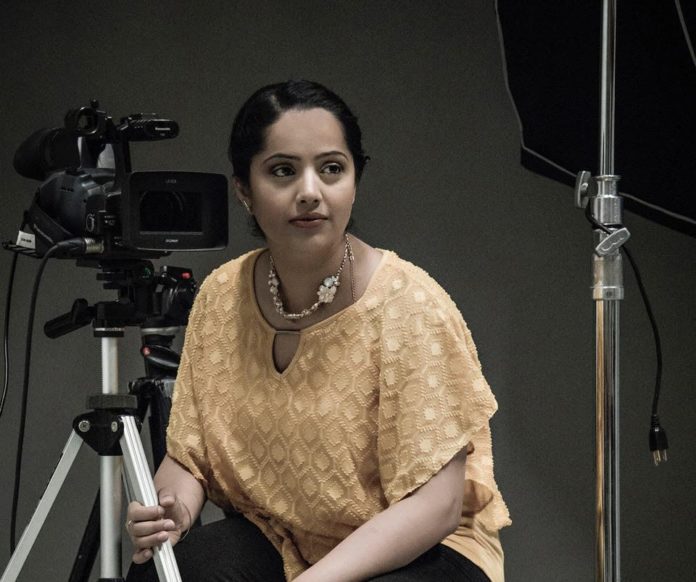Exclusive Interview with Asis Sethi – Filmaker
How long have you been making films and videos?
I started in Grade 5, making a documentary on the migration of Jazz from the South to New York City. I won second place in New York City and went onto represent Flushing, Queens at the state championship in Rochester, New York. From there, there was no looking back. Since that time, I have made a sixteen episode docu-series on historical Sikh shrines in India. I also shot two separate short films last year, one of which, A Bloody Mess, has been selected to feature at various film festivals. I hope to complete the edit of my second short film, Still.
What film was your directorial debut?
My live-action directorial debut is A Bloody Mess, which is also my most recent film. A Bloody Mess is a story about a teenage girl named Varsha, who struggles to open up a dialogue on menstruation within her traditional South Asian family as she is constantly stopped from participating in everyday activities whenever she is on her period.
How did you go about casting for the film?
Casting for the film was a challenging task. As a South Asian Canadian, it is challenging to find actors to portray characters who strike the right balance between maintaining a Canadian identity and traditional South Asian values. We actually cast a non-South Asian actor for the lead role in A Bloody Mess and did a lot of workshops to explain the familial and traditional context within which restrictions are imposed on the female who is menstruating. Equally difficult was casting the other two main characters, Aarti and Sanjay, her mother and father respectively, as we wanted them to have a certain demeanour without being stereotypical.
What was the most important lesson you had to learn that has had a positive effect on your film? How did that lesson happen?
The most important lesson I had to learn was to realize that there are times when, for the sake of ensuring your film stays on track, you have to edit certain scenes and be flexible in letting go of certain shots. Otherwise, you can end up with a very lengthy short film which contains everything you love, but may not necessarily be what the audience wants.
The lesson came when I made certain cuts to the film, showed a selected number of crew members, and received feedback. I then sat down with other crew members and realized that editing would be a long process to ensure the film was crisp and got the point across.
Tell us a bit about the other films you’ve made and your other projects?
The sixteen-episode docu-series, Darshan Dekh Jeeva, was shot over the course of three weeks in the monsoon season in India. We visited over seventy Sikh shrines over the course of twenty days, travelling through various states in 35 degrees (Celsius) weather.
Still, which is currently going through the editing process, is a short film on stillbirth. The film was shot in one day, in two different locations, and required four set changes. The entire film was a testament to the importance of an efficient film crew and really emphasized the importance of blocking.
What role have film festivals played in your life so far?
We have received a great response from certain film festivals, who have selected A Bloody Mess for screening. We are now an official Remi Award winner at the 53rd Annual WorldFest – Houston International Film Festival. Of course, with the current health climate, it has been difficult to travel with the film, but we hope that as the year goes on, the current world health crisis is tamed, and we can travel with the film. We hope we can engage in dialogue and increase awareness surrounding menstruation and normalize this conversation in our households so we can let go of the myths and stereotypes attached to periods in certain communities.
Is it harder to get started or to keep going? What was the particular thing that you had to conquer to do either?
Initially, it is very challenging to get started, but that is a very subjective opinion. With two young daughters by my side, it was difficult to actually sit down and finalize scripts and get a crew together, cast for the films, and work on pre-production. However, with a fantastic crew, I was able to really get the train going once I had my pre-production team motivating me.
I had to conquer my own insecurities that came with balancing my own editorial projects, motherhood, and being a part of a national television station. Carving out the time was the hardest, and making sure I was responding to what I wanted as a filmmaker, as opposed to doing what may be trendy, was all a part of the thought process I had to overcome.

How has your style evolved?
I have realized that I have become a lot more adaptable to new ideas and changing around major scenes. I have become more flexible as a filmmaker. However, at my core, my vision for certain shots remains the same, but I love to work closely with my Director of Photography. I find collaboration on a set is the best way to put together a true team project.
What has been your personal key to success?
There are two, from my perspective. The first is the passion I have to tell stories I believe are important for my community and society at large. The second is the team of fantastic women I have supporting each other in Fly Away Films Inc.
What are you thinking about doing next?
I am currently working on a feature film script, which will explore the journey of a female who has lost herself in her current life situation, and does not realize that she lost her identity and dreams somewhere in the past.
Where does your studio want to go from here?
Fly Away Films Inc. hopes to bring films which open up a dialogue in the South Asian community and the world community at large to counter prejudices, stereotypes, and myths. We hope to shed light on current issues and lend our support to projects to further social awareness at large.
Views: 215






